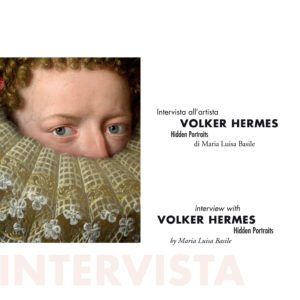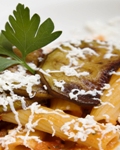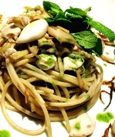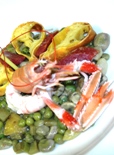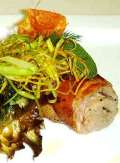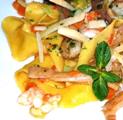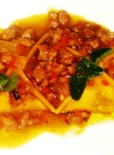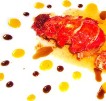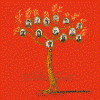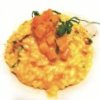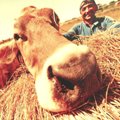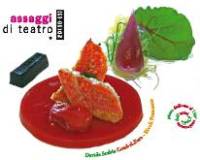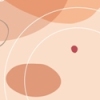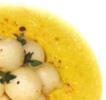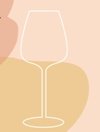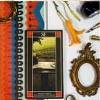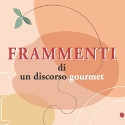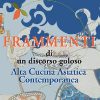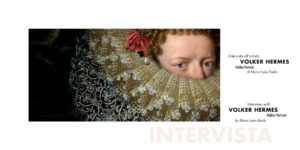 |
| Can you offer us a short presentation? Studies and training, the city where you lives… |
| I live in Düsseldorf, in the west of Germany. Here I also studied painting at the art academy in the nineties. |
| We are admired and curious about your artistical technique in Hidden Portraits, please tell us about it |
| My works are digital interventions in portraits of art history. I take particular areas of the paintings and cover the faces of the sitters. These interventions blend credibly with the original. I pay attention to the artists’ idiosyncrasies and create a comprehensible second version of the portraits under a new focus. The access via the face is no longer possible for the viewer and one’s gaze is directed to other areas of the picture which often pass unnoticed in the original version. |
| When did you start working on this project? How do you choose portraits? Do you carry out studies about characters biography, or do you reinvent it? |
| I started doing this already 10 years ago. But It was not until 2015 that I published them for the first time. Generally I am not deeply interested in the biography of the sitters, but rather in the artists who painted these portraits. In search of paintings that can become the basis of my work I browse almost every day through archives and collections of museums and discover the portraits absolutely intuitively. |
| How was born your idea of creating manipulations with details already present in the original portraits? And what message do they communicate? |
| Painted portraits are our cultural and historical heritage, and as a contemporary painter I bear the weight of it on my shoulders. Right after my studies I thought about the social meaning of art, the position of artist in society and how this is mirrored in paintings. I recognized that Portraits were intended to show rank, profession, educational background and degree of piety: in short, they were meant to be a representation of social standing. This explains why they contain allusions, codes of dress and codes of attributes that would have been immediately understood by the contemporary beholder they were intended for. However, these societies no longer exist in this form, we no longer understand these codes and I wanted to work with this different view of portraits. But I didn’t want to paint like an old master — I think that we are completely different people today and our painting has to be different; so I decided to go for digital image processing. Because of my great respect for the old masters, I do not add anything to the portraits from the outside, but only take elements that can already be found in the artwork. |
| Have you seen in person all the original portraits that inspire you? Do you find the artworks or do they find you? |
| The portraits I modify are located in museums all over the world. Unfortunately, I have not seen them all in the original. But I’m all the more touched when I meet them live. And it’s both, I find the paintings and the paintings find me. Sometimes I am interested in a certain period of time, sometimes in concrete works by certain artists. |
| In the selfies era, in which we often give up privacy by talking about ourselves in social networks, how do you explain the success of artworks that instead hide the identity of the portrayed people? |
| Portraits are meaningful to us. In the selfie era you mentioned, portraits are our continual companions and are deeply anchored in our visual self-perception. That is the reason why our relationship to painted portraits is also special, no matter what period they belong to: we bond with them. They are the pictorial testimony of people from a pre-photographic age, a vanished society.But by blocking access to the face, I open up a whole new way of dealing with these portraits. This is confusing, astonishing, but obviously also interesting, because it is different from what we are used to. |
| “Civil society is a society of silence and secret language and dialogue; of hypocrisy and frankness, of restraint and exchange”. This sentence was written by Dinouart abbott in the 1700s. In XVIII century the social game of mask was also metaphorical, a way to dominate oneself and to hide true thoughts. The “civilized” man – and woman – must never lose his/her demeanor. Has this influenced you? |
| Face-veiling is a theme that has frequently occurred throughout the ages. We are therefore familiar with countless examples of it, whether as protection against identification, for medicinal or religious reasons. Or even the mask of a bourgeois convention that we are not allowed to leave because it would violate rules of civilities. The playful game with masks, for example in carnival, is also known to us. Therefore, it was absolutely interesting for me to play with the general function of masking and to transfer it into a new context. |
| Baroque period is the season of a profound and surprising art, often connected to excesses. The etymology of the word “baroque” in one of the possible interpretations derives from the Portuguese “barroco” which means “irregular pearl” and which leads to a beauty understood not only as harmony, order and proportion, but also imperfection. Is it correct to say that your work brings a baroque deviation to portraits? |
| The Baroque period is characterized by major interventions of man in nature. The human body forms were modified by fashion with corsets, under constructions or wigs. The gardens were planned and calculated. Architecture also uses models from nature, but with human beings as the supreme designer. My work uses the means of modification, but the conceptual background is different. I do not feel like the crown of the universe, which is allowed to reshape everything, I don’t think in absolutistic way. I just want to show a new approach to portraits. |
“You will learn the hard way that in the long journey of life you will meet many masks and few faces.” This affirmation is by one of the XX century greatest italian Nobel authors, Luigi Pirandello, whose work is a perennial research on the identity of the person in its deepest aspects and on the mask that everyone wears in society, hiding a myriad of different personalities. This theme, therefore, goes well beyond the “Siècle des Lumes” and arrives in modern age. What is the further element of modernity contained in your artwork?
|
| The thought about one’s own identity is an important contemporary thought. Not only the individual identity, but also a social and historical identity. We have learned that these complex relationships influence many decisions. Because sometimes these are elements that we are not even aware of, but are incorporated into a deeper feeling. It is to these hidden aspects of identity that my work appeals, through a very obvious act of concealment. So I touch several levels of discourses. In order not to become too didactic, I use a form of humour to unsettle and break certain attitudes believed to be safe. |
| Museums play an important role in your inspiration. What works are you interested in, even if only for study reasons? What are your favorite museums in Italy? |
Museums are the place where historical paintings are shown. They preserve this amazing art and communicate its values. That’s why they are important for me. But almost every museum has its own character, different focus and different exhibits. That is why it is impossible for me to rank among the museums, I almost like them all, all for different reasons.
|
| The works in which the ruffs play a predominant role are of great effect. In the original portraits the ruffs enhances the face, while in your works they hides them. It remind Alice in the mirror, how the idea was born? |
| Ruffs were an important means of expression of representation in past times. Much more than they are today. They are close to the face, they are seen immediately. So the idea was obvious to take them as a means of concealment, especially since they are very direct, easy to understand metaphors for my work. It’ probably a quite simple act, but it is very powerful and mostly absolutely stunning. |
| On Hidden Portraits exhibition at Castello Visconteo Pavia you reinterpreted a mysterious portrait of a lady – attributed to Frans Pourbus the Younger – from the collection of the Pavia Civic Museums that could represent Lady Anna Bolena, second wife of king Henry VIII Tudor. Does the face covered up to the eyes by the fluffy ruff have a connection with life and death (which occurred by beheading) of this famous historical figure? And more generally, is the women condition a topic that you investigate? |
| As I have earlier mentioned, the biography of the sitter is not the focus of my work. But I know that most of the portraits I work on were painted in times which would not have been compatible with the ideals of our contemporary society. Absolutist power no longer exists, role models have changed and, in contrast to earlier times, the ideal of equal rights for all has become a central concern. That’s why it’s important to me to draw attention to the changed role of women. For example, by modifying the gaze of women in that way that they look more self-confident and self-assured. Away from a purely decorative portrayal, to an own personality with own power. |
| Your artworks are populated of single figures. What theme can we read in this choise: an investigation into loneliness or individualism? |
| It’s definitely about individuality. And this individuality is always more direct in a portrait of a single person. When several people are on a painting, there is this certain psychology among them, which disturbs the significance of my intention. So I only go for single figures. |
| In the last year, the message of your artwork has been loaded with deep meanings in social context because of pandemic and importance of wearing a mask to protect ourselves from an invisible threat. Do you think that public perception of your works has changed because of this crise? |
| Yes, since last year there is a huge interest in my work and this is certainly due to the fact that the subject of masking was part of everyday life for us. But also due to the closed museums, the interests in historical art have shifted to the Internet, where I was then “found”. But I am very glad that most of the viewers of my works have noticed that it is a reflection on portraits and not a reaction to the pandemic. |
Anticipations on future projects? Will other exhibitions take place in Italy?
|
| I have some projects in the works, unfortunately not in Italy. This is a pity because I love Italy very much and many of my works are based on Italian paintings. But I am grateful for any recommendation. |
| You have been travelling in Italy several times, what is your favorite Italian food? |
| I am more or less the pasta type. I like the simple things, give me “pasta con sugo” and I’m happy. |
| © Riproduzione vietata |
|
|
|
|
|
|
|
|
|
|
|
|
|
